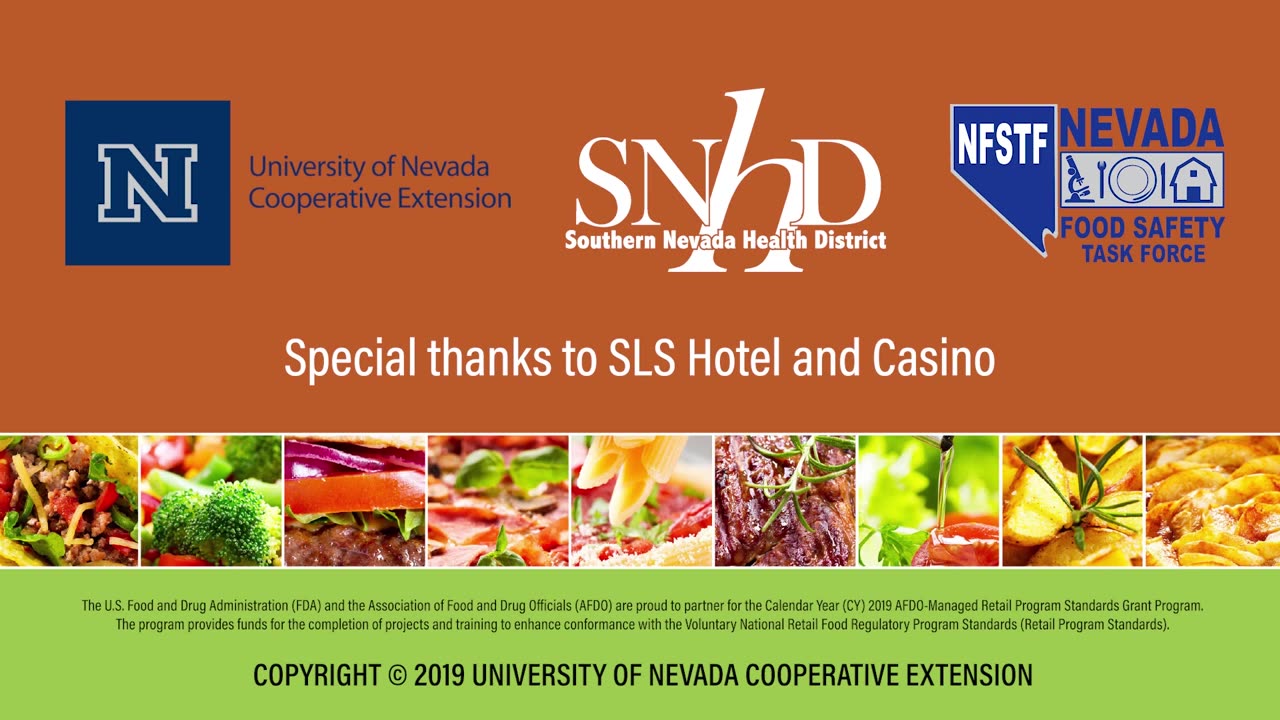Premium Only Content

Module 6 — Effective Communication and Conduct in the Workplace
### **Module 6: Effective Communication and Conduct in the Workplace**
Effective communication and professional conduct are essential in maintaining a safe, productive, and harmonious work environment, especially in food safety and handling. This module focuses on fostering clear communication and appropriate workplace behavior to ensure teamwork and efficiency.
---
### **1. Importance of Communication in Food Safety**
- **Prevents errors**: Ensures accurate execution of tasks, reducing risks of contamination or unsafe practices.
- **Promotes teamwork**: Encourages collaboration among team members to maintain safety and quality.
- **Ensures compliance**: Facilitates understanding and adherence to food safety regulations and procedures.
- **Supports crisis management**: Helps address emergencies, such as recalls or contamination incidents, effectively.
---
### **2. Types of Workplace Communication**
#### **A. Verbal Communication**
- Clear instructions during food preparation and handling.
- Daily briefings to highlight critical tasks and safety measures.
#### **B. Non-verbal Communication**
- Use of body language to signal understanding or raise concerns.
- Awareness of facial expressions and gestures to avoid misunderstandings.
#### **C. Written Communication**
- Maintenance of accurate records, such as temperature logs and cleaning schedules.
- Display of signs and labels for proper procedures and safety reminders.
#### **D. Digital Communication**
- Use of messaging systems or software for task assignments and updates.
- Training videos and online resources for consistent food safety education.
---
### **3. Effective Communication Practices**
- **Be clear and concise**: Use simple language to convey messages accurately.
- **Active listening**: Pay attention to team members and confirm understanding by paraphrasing.
- **Encourage feedback**: Allow colleagues to ask questions or share concerns without fear.
- **Adapt to the audience**: Tailor communication style to suit team members, supervisors, or customers.
---
### **4. Professional Conduct in the Workplace**
#### **A. Respect and Collaboration**
- Treat colleagues and customers with respect and courtesy.
- Foster an environment of mutual support and teamwork.
#### **B. Accountability**
- Take responsibility for assigned tasks and admit mistakes promptly.
- Report any issues, such as equipment malfunctions or unsafe practices.
#### **C. Punctuality and Reliability**
- Arrive on time and be consistent in work performance.
- Follow schedules and meet deadlines.
#### **D. Maintaining Cleanliness and Hygiene**
- Follow personal hygiene standards as discussed in **Module 3**.
- Keep workstations clean and organized.
---
### **5. Addressing Workplace Challenges**
- **Conflict resolution**: Handle disagreements professionally, focusing on solutions rather than blame.
- **Stress management**: Take breaks when needed and communicate workload concerns to supervisors.
- **Language barriers**: Use visual aids, demonstrations, or translation tools to overcome communication gaps.
---
### **6. Role of Supervisors in Communication and Conduct**
- Lead by example, demonstrating professionalism and effective communication.
- Provide regular training and feedback to improve team performance.
- Mediate conflicts and ensure a positive work environment.
---
### **7. The Impact of Communication and Conduct on Food Safety**
- Poor communication and unprofessional behavior can lead to mistakes, delays, and contamination risks.
- Positive interactions build trust among team members, improving overall efficiency and safety standards.
---
### **Conclusion**
Effective communication and professional conduct are vital for maintaining food safety and a productive workplace. By fostering open communication, demonstrating respect, and adhering to ethical standards, food handlers can create a safe and collaborative environment that benefits both the team and consumers.
-
 6:54
6:54
HSESafetyInformation
9 months ago6 Must Try Breakfast recipes By Food Fusion
421 -
 DVR
DVR
Flyover Conservatives
21 hours agoThanksgiving’s Hidden History: Islamic Pirates, Spanish Threats, and Socialism - Bill Federer | FOC Show
11.7K2 -
 25:43
25:43
Russell Brand
1 day agoThis Is Getting Out Of Hand
108K102 -
 LIVE
LIVE
The Quartering
11 hours agoThanksgiving Day Yule Log!
1,972 watching -
 15:32
15:32
IsaacButterfield
19 hours ago $0.31 earnedAussie Reacts To UNHINGED Woke TikToks!
4.83K4 -
 3:24:28
3:24:28
PandaSub2000
11 hours agoNintendo Platformers - Thanksgiving 2025 Special | ULTRA BEST AT GAMES (Original Live Version)
21.2K3 -
 1:03:06
1:03:06
MetatronGaming
1 day agoThis is the scariest game ever (for an Italian)
13.9K4 -
 1:09:35
1:09:35
The White House
6 hours agoPresident Trump Participates in a Call with Service Members
33.2K50 -
 LIVE
LIVE
a12cat34dog
5 hours agoHAPPY THANKSGIVING - I APPRECIATE YOU ALL SO MUCH {18+}
136 watching -
 24:55
24:55
Jasmin Laine
1 day agoCarney BRAGS About ‘Investment’—Poilievre Drops a FACT That Stops the Room
24.8K24